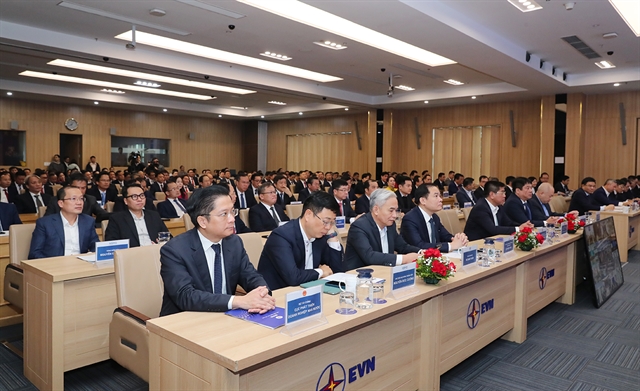 Society
Society

 |
| Experts discuss measures to boost STEM workforce development at the conference. Photo courtesy of the ASU |
HÀ NỘI — Building digital skills, technology and engineering talent, and scale is needed to develop the STEM workforce, experts said at a conference held in Hà Nội on August 18.
The eighth annual Science, Technology, Engineering, and Math (STEMCON) conference drew over 200 industry leaders, educators, policymakers, and forward-thinking entrepreneurs to address the imperative of cultivating a proficient and adaptable STEM workforce capable of driving Việt Nam’s digital economy towards a prosperous future.
It was organised by Arizona State University (ASU) with support from the US Agency for International Development (USAID) in partnership with Phenikaa University and renowned university and industry collaborators.
Against the backdrop of rapidly advancing technologies reshaping industries and redefining career trajectories, Việt Nam’s technical professionals and visionary entrepreneurs convened to deliberate and contribute towards crafting a potent STEM workforce. Central to this endeavor was a collaborative “call to action”, uniting the forces of industry, academia, and government entities to chart a comprehensive national roadmap for STEM education. This roadmap, meticulously curated, accentuated the significance of digital skills, technology acumen, and engineering prowess in sculpting Việt Nam’s educational trajectory.
Sessions and dialogues at the conference facilitated innovative partnerships, spotlighting Việt Nam as a burgeoning model for Public-Private Partnerships (PPP) in STEM within the ASEAN region.
Its sessions and presentations showcased the highest caliber of expertise and vision. The morning commenced with a keynote presentation celebrating the USAID Building University-Industry Learning and Development through Innovation and Technology (BUILD-IT) Project with impactful results and extensive outcomes. This eight-year collaboration between the USAID, ASU, industry stakeholders, and the Ministry of Education and Training, orchestrated a transformative symphony in higher education.
The Honorable Aler Grubbs, USAID Mission Director, commented: “Over the course of eight years, we have witnessed universities making significant strides in aligning their programmes with global standards. This transformative endeavor has brought about systemic change, empowering Vietnamese universities to embrace autonomy and innovation. BUILD-IT’s partnership-driven approach has been bridging the gap between academia and industry needs. Their focus on project-based learning and cutting-edge labs and makerspaces has unleashed the creativity and innovation of thousands of students, resulting in over 300 outstanding projects that push boundaries and drive progress.”
Following this, the “Industry’s Voice: Development of Vietnam’s STEM Workforce of the Future” panel gathered executives from industry giants such as Intel, Paradox, Oracle, Boeing, and Amkor. These industry stalwarts delved into discussions on industry-academia synergy, addressing challenges, and charting strategic pathways toward cultivating Vietnam’s STEM talent pipeline.
Another session, “Creating Pathways to STEM Education through Digital and Online Lifelong Learning at Scale”, delved into the promising realm of delivering comprehensive STEM education through digital platforms.
Other sessions highlighted university autonomy, building 21st century professional skills and reskilling the STEM workforce through “Just-in-Time” micro-credentials and certification programmes. VNS




